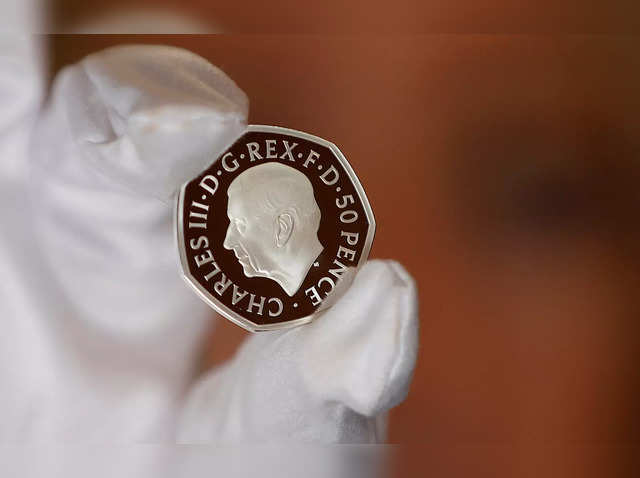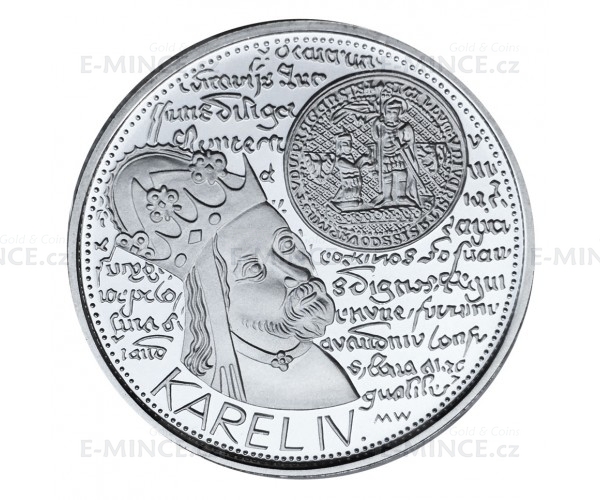High-precision CNC (Computer Numerical Control) machines play a significant part in the design of dies or master hubs for the creation of gold coins and medals. This article will provide an outline of CNC Programming.
The software CAD (Computer Aided Design) is used to create an electronic 3D representation of a medal or coin design.
CAM (Computer Aided Manufacturing), software that generates toolpaths and commands and instructions for CNC machines based on 3D models.
Choice of Die Material
CNC machining of the master hub and die uses quality, durable materials like steel, brass or other hardened metals. They are able to stand up to the high-pressure strike process, and reproduce the design precisely.
Fixtures Installation, Setup and Repairs
The chosen material is securely fixed onto the CNC machine's worktable or vice for precise cutting. The correct fixing of the material is vital to stop the material from moving and vibration during processing.
CNC Machining Process
CNC machines employ cutting tools such as ball mills or end mills to cut the design inside the master hub or die.
The CNC machine is used to remove material from blocks of material that are blank according to 3D specifications.
Cutting tools can be of different sizes and shapes to create different depths, shapes and designs on a medal or coin.
CNC machines are controlled by computer algorithms that guarantee accuracy to a micrometer level.
Refinement and Finishing
The master hub, or die, is then refined.
Utilizing special tools or by smoothing, polishing and detailing the surface, you will be able to make sure that the surface is in compliance with the standard.
Quality Control and Inspection
The final die or hub is then put through a thorough inspection with the aid of measurement tools including micrometers, gauges and optical measuring instruments, to ensure it is in compliance with the requirements of the design.
Hardening and Treatment (optional)Treatment and Hardening (optional)
Certain dies undergo heat or surface treatments to improve their durability.
The precision and power of CNC machines permit the precise reproduction of intricate designs onto master hubs or dies. Die sets provide the equipment to create gold coins or medals consistently, accurately, and with fine specifics. Read the top CNC Machining Prague Mint gold coins more examples including gold angel coin, spanish gold coins, 1 ounce gold, 24k gold bullion, 1 0z gold, price of 1 oz of gold, american eagle gold coin 1 oz, american gold eagle 1 oz, $20 gold piece, gold price coin today and more.

Why Does A Gold Coin Or Medal Dies Go Through Vacuum Hardening?
The hardening by vacuum of dies that are used to make gold medals and coins is achieved by subjecting them to extreme temperatures in controlled conditions in a vacuum chamber. This article will provide an outline of the vacuum hardening process for dies Preparation and Cleaning.
To prepare dies that will be used to make the coins or medals, they must be clean and free of any contamination or residues.
Moving into Vacuum Furnace-
The dies are then placed in a specially designed heat-treating chamber that creates an atmosphere of vacuum.
Evacuation from Air
The vacuum furnace draws air from the chamber, creating a controlled vacuum environment devoid of oxygen and other gases. This assures uniform heating and stops the oxidation process from occurring.
Heating Phase
The furnace then gets heated up to the temperature required for hardening dies. The range of temperatures is determined by the material used and the hardening process.
Soaking at High temperatures
The dies stay at high temperatures for a specific time, which allows materials to attain the level of hardness desired and to maintain metallurgical structures.
Quenching (or cooling)
Using specialized methods using specialized techniques, dies are swiftly cool down or melted after the soak process. The rapid cooling helps the metal achieve the desired hardness.
Tempering (Optional).
In some cases the tempering process is a part of the process of hardening. Tempering is the process of heating dies to a lower temperature, which helps alleviate internal stress and increase the toughness of the die while maintaining its hardness.
Quality Control and InspectionQuality Control and Inspec
To ensure that they meet standards for hardness and strength, hardened dies go through an exhaustive inspection and quality control.
Post-Treatment Handling-
Dies, once the vacuum-hardening process has been completed, may be further processed like polishing and coating, before they are utilized in the strike of coins or medals methods.
The vacuum hardening method increases die durability, wear resistance, as well as the longevity of the dies used for striking gold or silver coins and medals. By ensuring a controlled and clean environment it provides an exact and reliable method to make the dies harder. Read the most popular vacuum hardening Czechoslovakia gold medals website advice including 1 ounce gold, st gaudens gold coin, 1 10 ounce gold coin, 2000 sacagawea dollar, cost of gold coins, buy gold and silver, 2000 gold dollar, congressional gold medal, gold one dollar coin, $20 gold coin and more.
How And Why Is It Possible To Achieve Certain Textures Or Finishes, Like Matte Or Textured Surfaces?
Sandblasting is a method employed to produce particular textures or finishes that include matte or textured surfaces, on gold coins or medals. The procedure of Sandblasting is explained.
Surface preparation- The coin or medal is placed in an enclosure or chamber with a nozzle connected to an air compressor. The chamber is usually sealed to keep the abrasive used in the process contained.
Abrasive Material Selection: Fine particles of abrasive materials such as sand silicon carbide, glass beads, or aluminum oxide, are propelled on the surface of the medal or coin with high velocity.
High-Pressure Propulsion: The abrasive particles are propelled onto the surface by compressed air or another high-pressure system. The force and velocity at which the particles hit the surface create the desired texture or finish.
Texture creation: By altering the surface's topography because of the impact of the abrasive particle it creates a texture. This method can be used to create an even texture or roughen certain regions.
Sandblasting can be controlled in terms of intensity, duration and angle adjusted to create different textures or finishes. Different pressure levels, abrasives and abrasives produce different results.
Sandblasting is a necessity?
Texture variations- Sandblasting permits the creation of various textures or surfaces such as mattes, frosted, or rough surfaces. This can create an aesthetic appeal and adds unique characteristics for the coins or medals.
Enhancing aesthetics- Sandblasting can alter the appearance of a surface by diffusing light, and thus reducing shine. This may enhance the appeal of the coin. Surfaces that are matte, like those that reduce glare, are able to highlight particular design elements.
Anti-Glare Property - Sandblasting produces smooth or matte surfaces that minimize reflections, glare and make the coin or medal more appealing.
The contrast of design elementsSandblasting can produce contrast between polished and textured parts of a coin or medal. This helps to emphasize certain features, or create visual depth.
Sandblasting can be personalized to create unique designs or textures.
Sandblasting, a method that is versatile that can be used to create various designs and finishes for the surface of medals or coins. It improves the aesthetic appeal, visual appeal as well as overall design. View the top sandblasting Prague Mint gold coins site tips. including bullion dealers near me, 5 cent piece, gold coin store near me, gold coin with angel on both sides, gold coin values, $50 gold coin, gold coin gold, saint gaudens double eagle, gold and silver dealers near me, 50 dollar gold piece and more.

What Quality Checks Are Conducted On Gold-Plated Coins And Medals To Ensure That They Conform To The Specifications??
Gold coins and medals which have been made undergo several quality checks. This ensures that they are in compliance with the requirements and are precise, as well as having good surface. These checks are made up of many steps.
Trained inspectors visually examine each coin or medal for surface imperfections or imperfections. They also look for blemishes, scratches, or other flaw. They examine the coins for flaws, including scratches, marks or irregularities.
Dimensions and Weigh
Each coin and medal is weighed to make sure it conforms to the specified dimensions in terms of weight, thickness, and diameter. Any deviations could indicate an issue with the product.
Composition and Purity of Metals
As part of the quality check the medals and coins are tested for gold purity or content using various methods like XRF analysis or chemical tests. They must meet the gold quantity and quality standards.
Edge Inspection
Inspectors examine the edges of coins or medals for uniformity and reeding (if there is), and any irregularities. The edge is a good place to include security elements or designs.
Strike quality
Every coin that is minted is evaluated for the quality of their strike. This includes the precision and clarity of design details as well as reliefs and the overall appearance.
The Proofing Errors, Minting Falsehoods
For proof or special edition coins, a thorough inspection is carried out to determine any minting errors, flaws or other discrepancies that could affect the coin's collectible value.
Packaging and presentation
Quality checks extend to presentation and packaging making sure that coins and medals are securely encapsulated, stored, or presented in cases or holders without any damage or contamination.
Random and Sampling Checks
Random checks or random sampling are performed on batches to ensure the highest quality standards are maintained throughout the entire minting process.
Compliance and Documentation-
All quality tests are recorded to ensure compliance with regulations, minting standards and certification needs. These records act as proof of the coin’s quality and authenticity.
Rejecting non-conforming pieces-
In order to maintain the integrity and quality of the whole the integrity and quality of coins and other items minted that don't conform to the standards set by quality are rejected or sent back for reprocessing.
Mints and certification authorities perform these quality checks to ensure gold coins and medals meet required standards of authenticity, purity, value and design. They also assure investors, consumers and collectors that they are genuine and of the highest quality. See the best Czechoslovakia gold coin quality control blog examples. including 2000 p sacagawea dollar, gold bullion price today, gold coin shops near me, old silver coin, small gold coins, 1 4 oz gold coin, coin 1, 50 dollar gold coin, gold bullion bars for sale, small gold coins and more.
